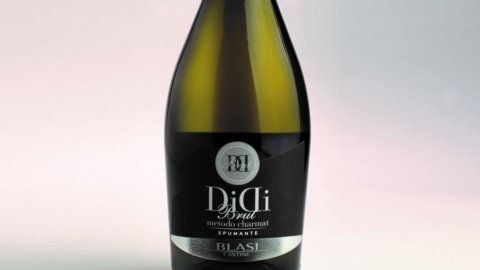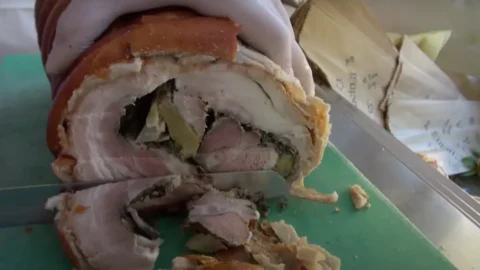A glass of Didi bubbles and a plate of warm porchetta. Emperor Nero's favorite food, a typical product of central Italy, already designed by Leonardo da Vinci, mentioned by Carlo Emilio Gadda in his great "pasticciaccio" and celebrated by the New York Times, today it is also paired with sparkling wine.
In Umbertide, a medieval village in Umbria where woods and vineyards meet on the edge of the Tiber and a stone's throw from the rolling Tuscan hills, the Blasi winery opens its doors to tell the story of Didi and the fruit of her passion for wine that led to the construction of a real archi-cellar next to the eighteenth-century one of the Bertanzi counts acquired over time by the Blasi family and guardian of the barriques destined for the refinement of the company's finest wines.
Two cellars, one ancient, suggestive with its barrel vaults and its intriguing underground suitable for a noir fiction and one very modern, where steel and crystal reign supreme. Both are coordinated today by Michele Serafini, adored nephew of Bino Blasi, affectionately nicknamed Didi, and son of Anna who, with his brother Mauro Blasi, takes care of the family winery.
The cellars are immersed in the greenery of the vineyards, some of which are very old and traditionally marked by splendid rose bushes. Here it is the wine that dominates but it is the cured meats and the famous porchetta, all produced for almost a century by the Blasi family, that represent the added value of the tasting among the old French oak barrels or the modern crystals.
The label of the charmat method sparkling wine is dedicated to the head of the family. "Didi" is an extra Dry, a blend of Trebbiano Spoletino and Chardonnay, suitable for an aperitif and also enjoyable throughout the meal (€9,50 per bottle in the cellar). Peach, apple and acacia flowers on the nose, "Didi" is an agile wine for the palate due to its fresh notes, observes Michele exhibiting a youthful and cheerful enthusiasm in front of the glass.
The Blasi vineyards extend for 29 hectares, where the indigenous Trebbiano Spoletino, Grechetto and Sagrantino vines are grown as well as international vines, from Merlot to Cabernet Franc to Sauvignon, with an overall production of bottles of around 25 thousand, to which is added that of bulk wine which has always been appreciated by local customers as is customary in the countryside. Next to "Didi" is "1742", a classic method sparkling wine that takes its name from the year of birth of the ancient cellar, made with 70% Chardonnay and 30% Trebbiano Spoletino grapes, 30 months spent on the lees before disgorgement (18 euros in the cellar).
Ripe yellow fruit on the nose, together with citrus fruits and acacia flowers added to the classic hint of bread crust make it a real nectar. Fresh and savory on the palate, the 1742 blend finds its best pairing and pleasantness in fish dishes. As well as the Rogaie Bianco, a fresh and captivating wine, made of 60% Chardonnay grapes, 20% Traminer and 20% Sauvignon blanc, which plays on the aromas of fresh fruit such as apricot, papaya and peach, with notes of citrus and aromatic herbs (€9,50 per bottle in the cellar).
For the bone wines that go well with raw ham, capocollo and dried sausage, in an all-out tasting in the Umbrian style, the red Rogaie stands out, a blend of 70% Merlot and 30% Syrah. Cherries, currants and balsamic notes on the nose with a pinch of black pepper, it is a wine that can be drunk within a year or two of production. Then, in conclusion at the top of the roundup of tastings, "Impronta" parades, as if to say, underlines Michele, a new Virgil amidst ancient pupitres and steel barrels, that the family wants to help leave its mark on the territory with an important wine also in the alcohol content (14 degrees) and composed of 40% Sagrantino, 30% Merlot and 30% Cabernet Sauvigno grapes. Intense, with aromas of ripe red fruits, it accompanies a pairing with main courses, with elegance and maturity after having aged in barrique for two years and then at least 18 months in bottle.





